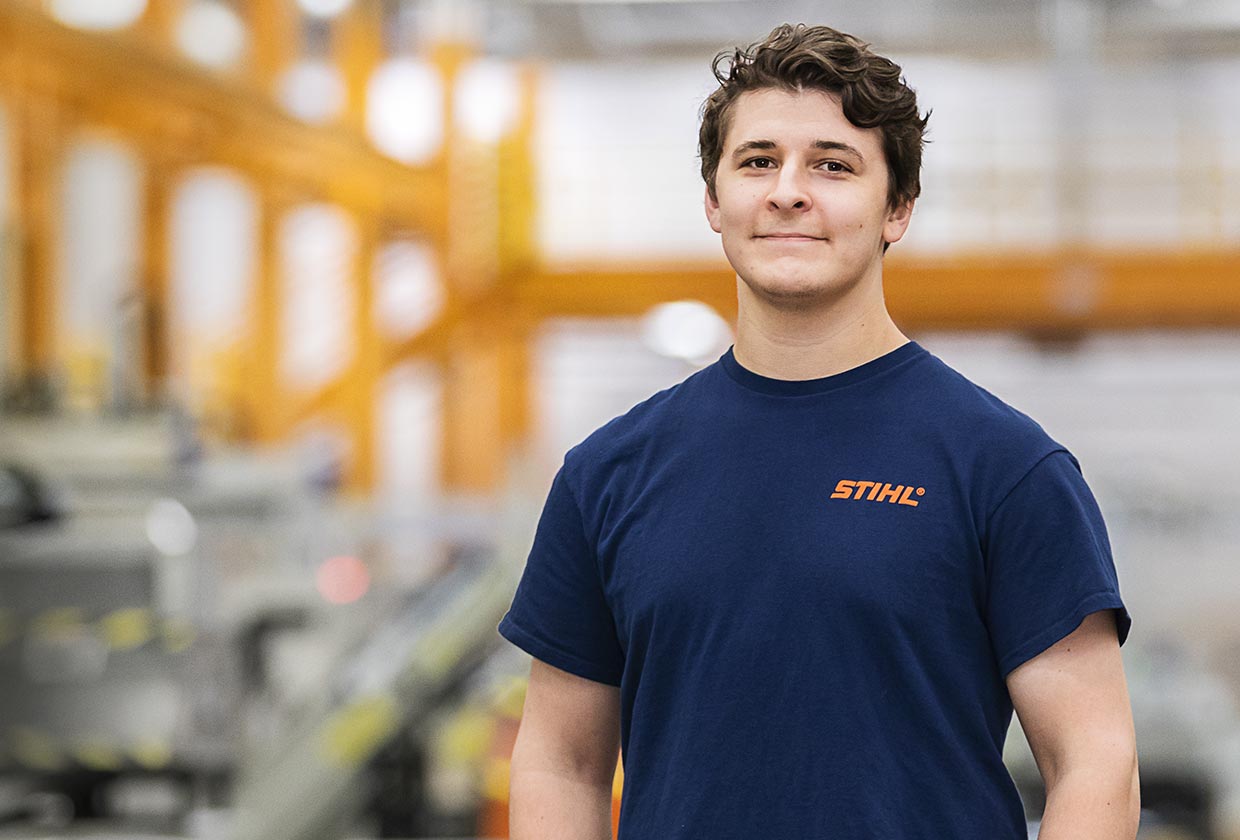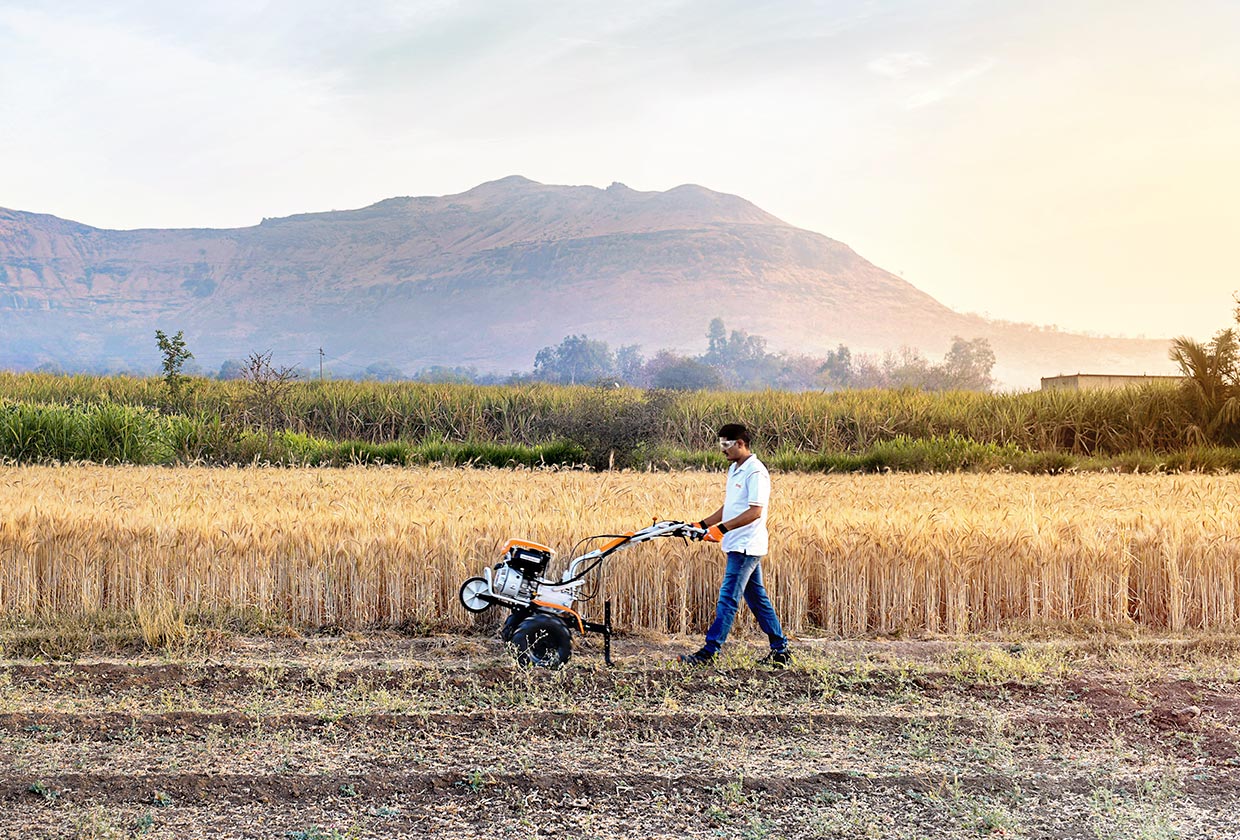Different starting positions, one shared goal and one driving force: to lead the field of forestry as it moves into a digital future. On a recent walk through Germany’s largest private forest, Michael Prince of Baden and Dr. Tim Gegg, Head of Digitalization at ANDREAS STIHL, shared their thoughts on the future of forestry.
Measuring
the forest
When Michael Prince of Baden and Tim Gegg met for the first time, one thing was clear right away: They have good chemistry. Yet their starting positions could hardly be more different. Michael Prince of Baden, the youngest son of Maximilian, Margrave of Baden, is in charge of the family business. The noble family, whose seat is at Salem Palace, is especially active today in agriculture, forestry and viticulture. The margrave’s forest is located in the western part of the Lake Constance area, in the foothills of the Alps. Dr. Tim Gegg, for his part, holds a doctorate in mechanical engineering. He is in charge of digitalization at ANDREAS STIHL, the family company based in Waiblingen whose chainsaws and power tools have become market leaders throughout the world. On a walk through the forests around Lake Constance, it doesn’t take long to see why the two men have a connection. They share a common vision for digitalizing the field of forestry and moving it into the future.
MOVING TOWARD DIGITAL FORESTRY
The forest is many things: a habitat for people and animals, a soothing counterpoint to the hustle, bustle and noise of everyday life and an essential contributor to stabilizing the climate. But the forest is also an important source of timber – a renewable raw material. And there are several industrial sectors that depend on it, forestry chief among them. Forestry itself is currently undergoing a transformation as it moves away from the romanticized image of the forest manager to a model increasingly focused on global competition, set against the ever-present backdrop of climate change. Since the production process from regeneration planning to harvest lasts 80 to 100 years, this represents a huge business challenge. Flexible planning, process-oriented organization and the very latest in technology are all key factors.
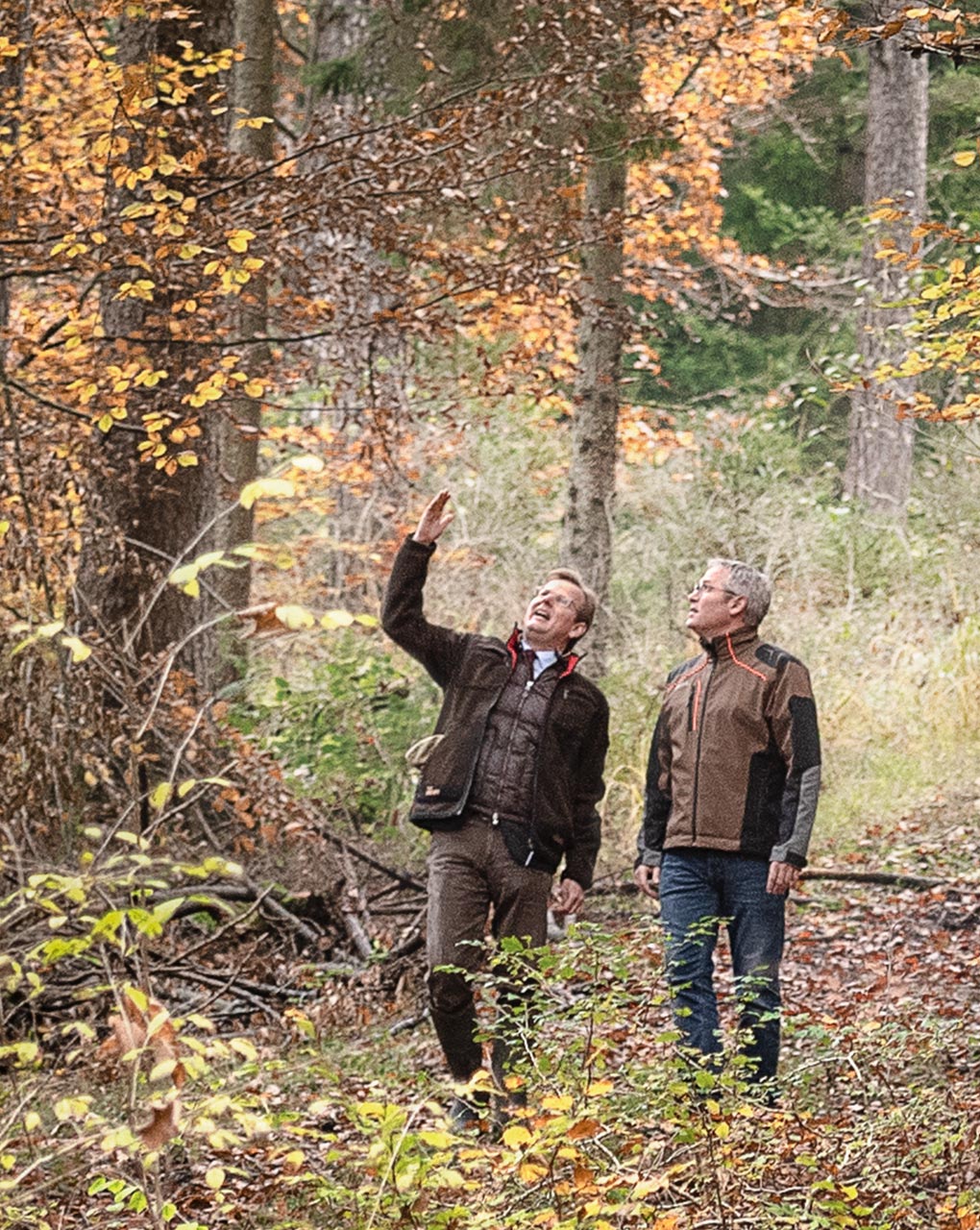
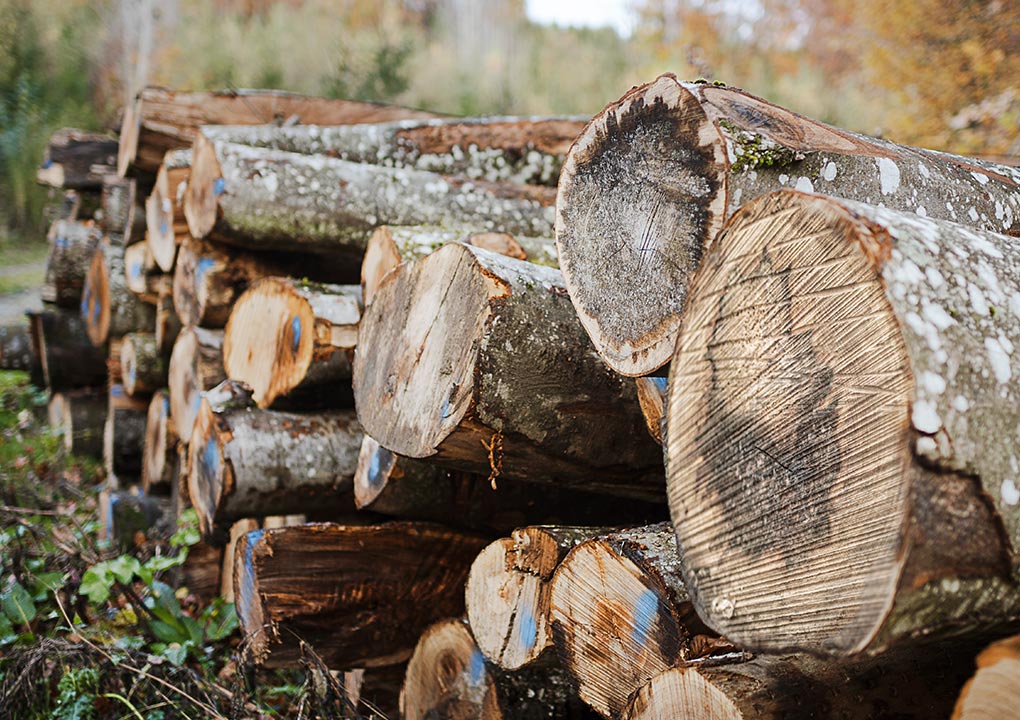
The traditional image of the forest manager strolling through the woods and relying on past experience alone is long since outdated. “Digitalization is opening up new possibilities for exploring more successful growth models, even as extreme weather events become more common, average temperatures climb and storms become more frequent,” the prince explains. Forestry strategies developed on these models can then be planned and implemented systematically. The family’s forestry business engages in selective thinning, for example. Specific trees are identified as “future trees” and selected early in their lifecycle based on whether they have optimum characteristics to reach maturity in the future conditions that have been modeled. “This lets us balance environmental aspects related to good forestry practices and business.”
From an entrepreneurial standpoint, a forest is a long-term investment, with the forest manager acting as a financial advisor and asset manager in one. The prince believes digital solutions are needed to perform this task at the highest level. When he talks about digital forests, he points to Scandinavia as an example: “The value chain there is end to end. There are no breaks, and the flow of goods has been fully digitalized.” Even though forestry operations in Central Europe take place in conditions very different from those in the far north, the prince still believes too many stand-alone solutions are being pursued. “A lot of the approaches you see here are good, but there are still a lot of stand-alone solutions,” he says. “They don’t relate to the overall process, and they don’t bring all the different aspects together.”
Gegg seems to have been waiting for this very topic. “When it comes to the digital forest, we can’t think in narrow, compartmentalized ways,” he says. The STIHL Group is currently redefining its offerings in this area. Until now the name STIHL has stood first and foremost for high-quality power equipment for use in forest management. Recently STIHL has begun to view its forestry equipment as a source of data as well. Digitalization is still a very new field for STIHL, but it is one that is very important to our future. “If we as an industry leader pursue a new approach, it sends a far-reaching signal. With our knowledge and our products, we have the potential and the brand name,” Gegg says with certainty. Michael Prince of Baden has a similar view: “The crucial impetus has to come from within the industry. Forestry itself is too disparate and diverse.”
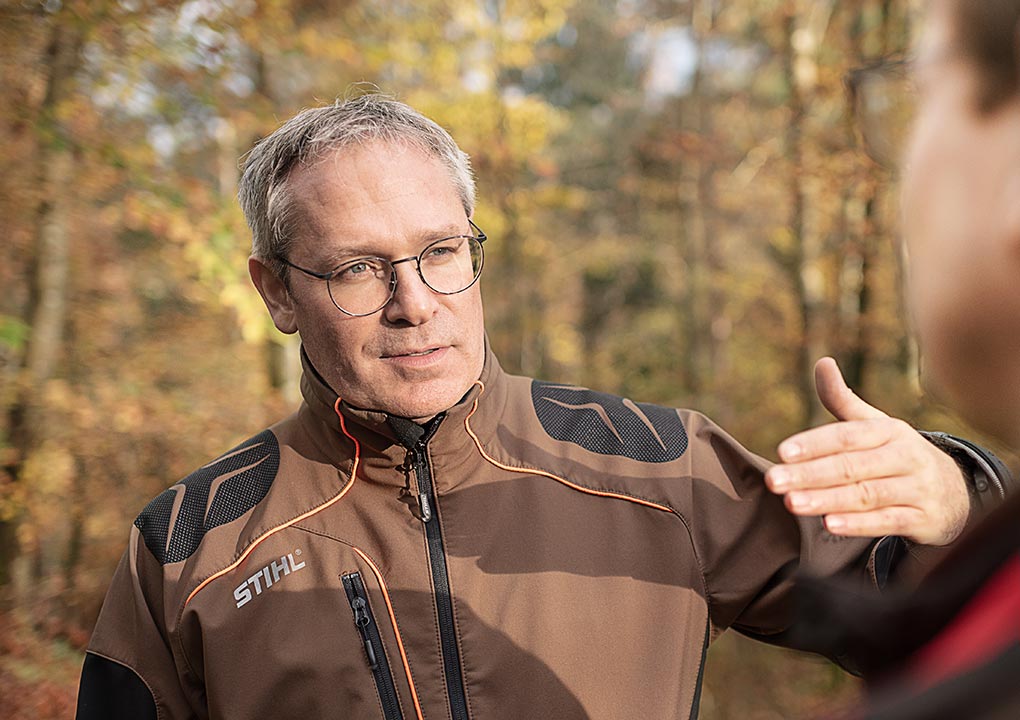
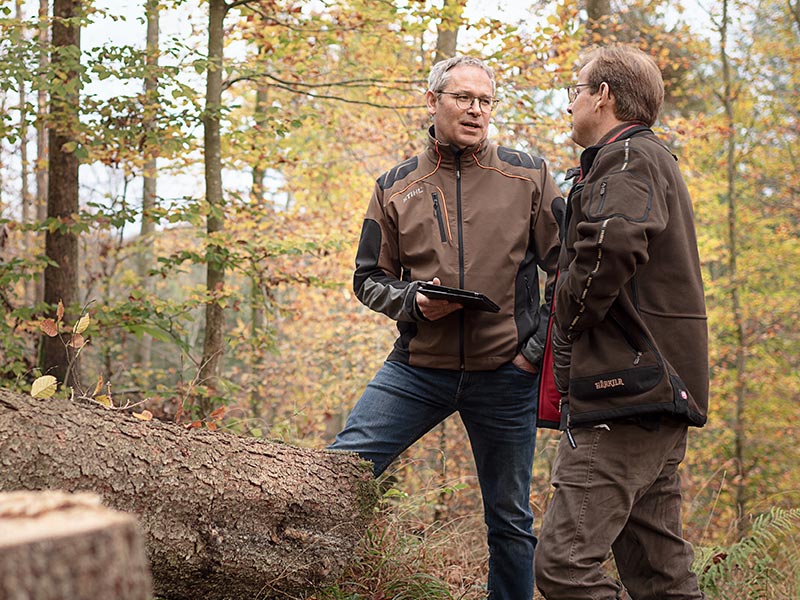
“ A forest is a long-term investment. As an ENTREPRENEUR the forest manager is therefore financial advisor and administrator in one. ”
Michael Prinz von Baden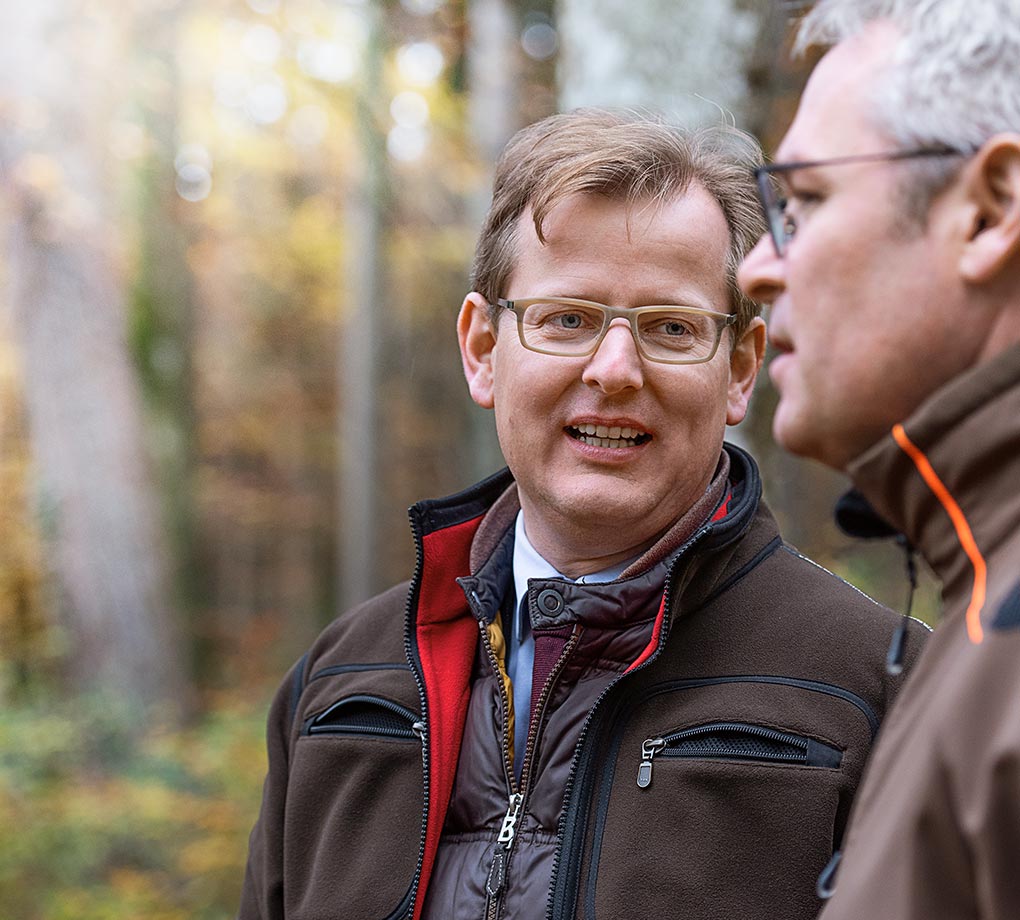
POOLING KNOWLEDGE, FINDING PARTNERS
But industry alone cannot act as a savior. Instead, hand-in-hand cooperation will be needed to make digitalization a reality along the entire value chain. STIHL is strong in terms of knowledge about products and applications. The company also has a growing store of data – and with it, expertise – about the overall conditions and other stakeholders. This is why Gegg believes the task is to broaden STIHL’s focus on an ongoing basis: “The key to digitalization is looking at overall processes and partnerships. Working with private forest owners, forest cooperatives and communal forestry businesses can be especially productive. After all, these entities have to think in business terms, and they will be increasingly reliant on accurate data and digital solutions in the future.” Ideally, there would be a living digital twin of each forest that actively changes along with its analog counterpart. This is the only way to monitor investments in forests with as much accuracy as possible over the long term.
That is true of all stages of work, from planning, planting and cultivating future trees to valuation, sale and timber processing. “The flow of data has to start with biological production,” Gegg points out. Creating a virtual link among the individual process steps helps determine at an early stage what kind of timber will be needed and when. The two men share the view that this can only have positive effects. For example, wood of all qualities can be put to optimum use instead of lying unused along the edge of the road. The processing industry will benefit because it can position itself differently and develop more attractive pricing models. And that, in turn, will mean everyone involved benefits from digitalization.
11.4million
hectares of forest can be found in Germany. That’s about one-third of the country’s total area.

SKILLFULLY
CONNECTING
FOREST
STAKEHOLDERS
PROF. Martin Ziesak is a professor at the Bern University of Applied Sciences, School of Agricultural, Forest and Food Sciences (HAFL), where he works within the Forest Production group in the Forest Sciences department. Ziesak, who teaches forestry and engineering, is especially interested in new concepts for sustainable – and digitalized – forestry.
Prof. Ziesak, what are you working on these days?
Martin Ziesak My subjects at the university include traditional process engineering, labor studies and forest development. All of them are logically connected and build on each other.
Those are very traditional disciplines. How do you connect them with the digitalization of forestry?
Martin Ziesak When it comes to forestry work, the big picture is very spread out. That’s different from an industrial company, for example, where we know exactly what process step takes place where. In the forest, the challenge is to digitalize specific work steps and work objects in such a way that everyone involved can plan and coordinate smoothly. Some of the sensors needed for this are already in place, but we still need more. The goal should be for the stakeholders who are active in the forest to grasp things automatically. The ultimate goal is to visualize the interconnected activity of data, data streams and stakeholders. We can use well-known concepts from “Industry 4.0” to generate real added value here, across practically every area of forestry.
How open is a highly traditional industry like forestry to these kinds of new approaches and processes?
Martin Ziesak Forestry is highly conservative, and we’re lagging behind a bit compared to Industry 4.0 or what you might think of as “Forestry and Lumber 4.0.” But I think this is still a healthy attitude. People have been taking more of a wait-and-see approach, observing what works in practice and what new developments do in fact yield the added value that was hoped for. On the other hand, the industry faces dramatic change as a result of climate change and the very tense economic situation. That’s why there’s a lot of movement toward new technologies these days.
What applications do you think are leading the pack here?
Martin Ziesak Digitalization in forestry has been underway for decades now. The challenge is to use this pool of data and implement it profitably in new processes and products. That’s why I see it more as a parallel run with multiple things in different dimensions. One task – and this is something I’m working on in the Smart Forestry project, for example – is to set up a clean architecture in which already fully mechanized steps are documented and used in the same way as all traditional tasks performed by hand using power tools. There is a clear development task to be pursued here, and we are tackling it.
Speaking of tasks for the future, where do you think the biggest need for action lies?
Martin Ziesak I’m a little concerned to see that there are a lot of stand-alone solutions being developed right now, generating individual areas of added value that don’t come together into a single big picture. An overarching solution should ideally work independently of the manufacturer and combine the vision of smart processes with smart machines. The industry needs research projects that are relevant from the execution standpoint. Only if we pinpoint the concerns and needs of stakeholders in practice will we be able to do research that really makes sense.
What makes doing research in this field so fascinating to you personally?
Martin Ziesak Even with all its traditional aspects, forestry is an industry with a lot of potential for the future, and one that performs a great social service. Personally, I want to help the industry and open doors to the future.

